Photographing a Rufous Hummingbird Raising Her Family in our Backyard
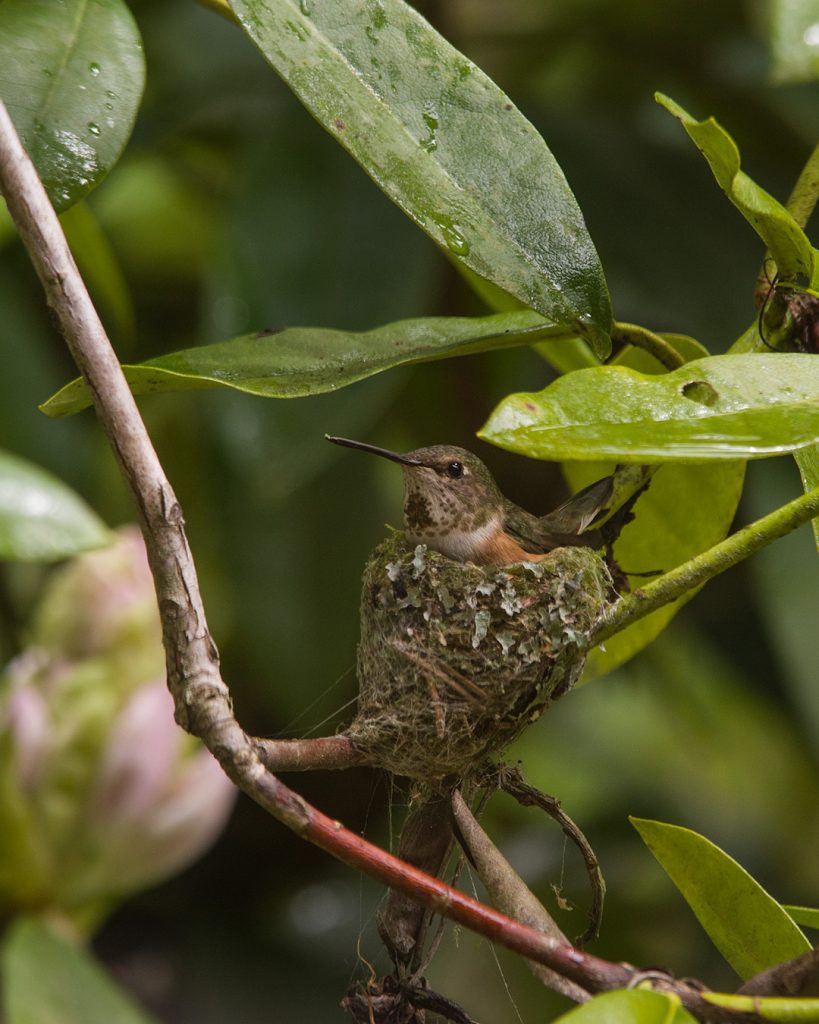
“There’s a hummingbird nesting in our rhododendron” said my wife to me in early May. Taking a look at the location I realized that a unique photographic opportunity had presented itself. Little did I know how rewarding this opportunity would turn out.
A little rufous hummingbird had built a tiny nest six feet off the ground and eight feet from a window at the back of our home. I quickly set up a spot at the window with a chair on top of a table to look down on the nest. A bed sheet across the window created a blind and I was in business.
Rhodie the Hummer
My wife and I called her “Rhodie” for her choice of nesting locations. This rhododendron had white flowers and was soon to be in full bloom. Research on the internet verified the construction of her nest. Rufous hummingbirds will use moss, grass and spider’s web to construct a tightly woven nest. Some bits of lichen and tree needles add some important camouflage.
We could not see down into the nest to tell if Rhodie had laid eggs. Wishing to get a photograph of eggs I climbed on the roof to get a higher vantage point. Sure enough two tiny eggs were sitting in the nest. Rhodie made her displeasure known that I was too close to her nest. She buzzed around me splaying her tail feathers widely. I snapped a quick picture and evacuated.

Rhodie Becomes a Mom
We checked on Rhodie daily as she sat patiently in her tiny nest which was not much larger than her. From research we learned to start watching for the eggs to hatch after roughly two weeks. On May 22 we got our first glimpse of little ones moving in the nest. I spent about two hours waiting patiently for Rhodie to feed them and also verify that both eggs had hatched. In one of the most amazing sights I have ever witnessed, the new Mother buzzed up and fed BOTH her new babies. Their pea-sized heads popped up with mouths open wide to receive her food. Having never seen a hummingbird feed her chicks before I fired off images endlessly until Rhodie left and the chicks hunkered down in the nest.
New Lens
The hatching of the chicks coincided with the arrival of a new telephoto lens. The Pentax HD D FA 150-450mm f/4.5-5.6 lens is quite an amazing lens. It has incredible quality and superb optics. The first images of Rhodie nesting were captured with my Tamron 70-200mm f/2.8 zoom lens but I really needed a little more reach. Being able to zoom to 450mm made it really easy to get closer to this very intimate scene. The weight of the lens did require that I use a monopod most of the time. Handholding this beast and zooming to 450mm made for blurry photos. My 3 Legged Thing Punks Travis tripod has one leg that can be removed and attached to the center column creating a nice monopod.
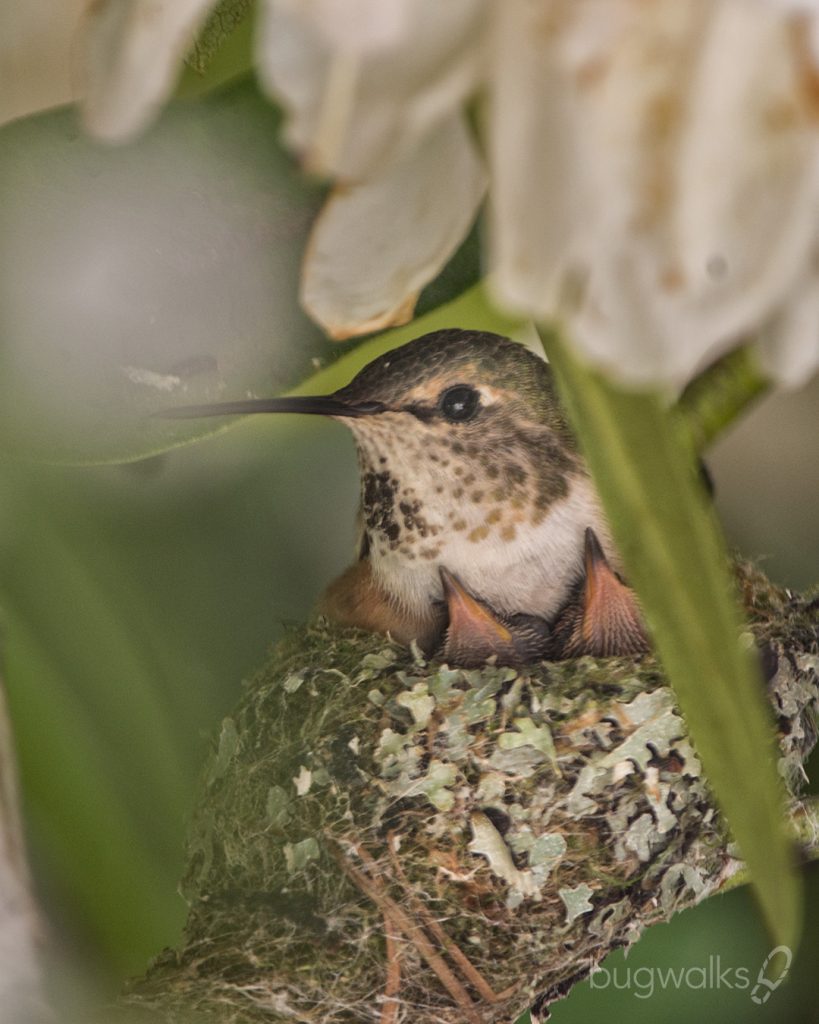
Blooming Rhododendron
The first week of the new chicks lives occurred as our large rhododendron came into full bloom. This made observing Rhodie and her chicks a lot more difficult. However, it proved that she selected a great, well hidden location for her nest. It took a lot of will power to not go out and do a little selective trimming. The images I did manage to capture had the rufous hummingbird family nestled softly among the flowers.

Busy Mama and Hungry Chicks
Over the next two weeks Rhodie flew countless trips gathering food for her two young ones. It turns out new chicks are fed primarily a diet of bugs mixed with a little nectar. Growing kids need the protein. When Rhodie would feed them it appeared that she would insert her beak dangerously deep down their throats. Of course, Rhodie knew what she was doing and the chicks grew quickly.
At some point I finally had the presence of mind to capture some video of Rhodie feeding the chicks. Holding a big zoom lens steady even with a monopod proved difficult and the video was a little shaky.
Click here to view the video: See Rhodie feed her chicks!
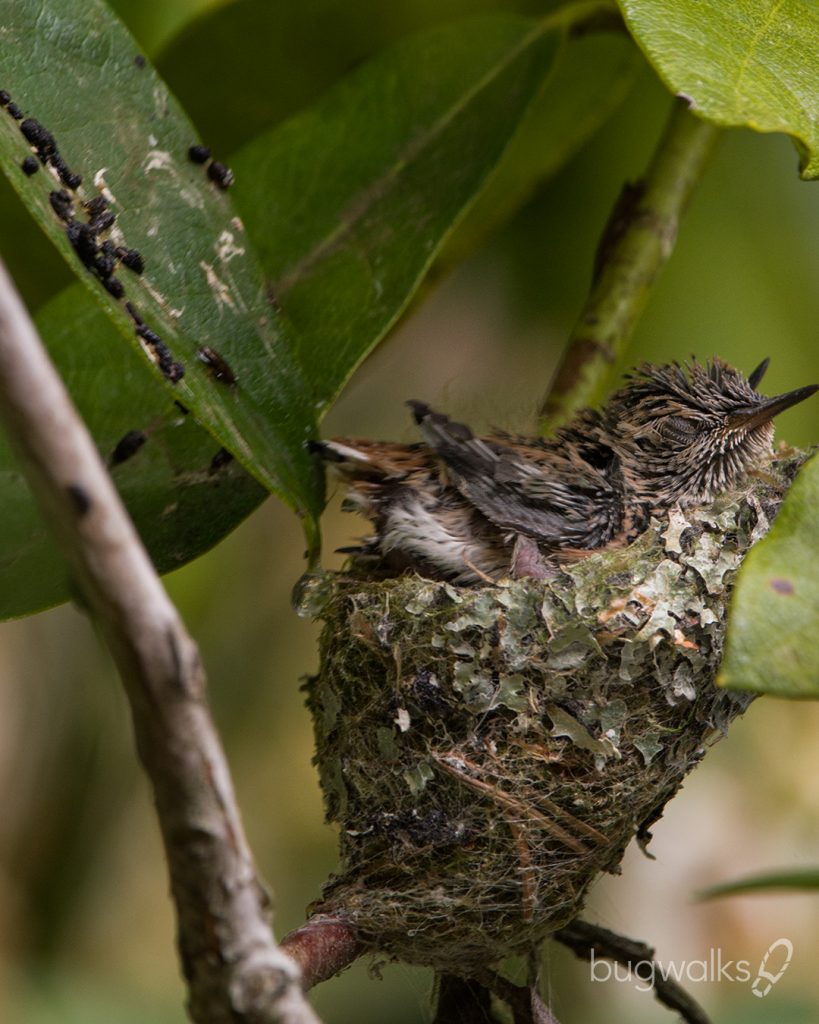
Keeping the Nest Clean
I began thinking that after a couple of weeks living in such a tiny nest, two chicks could make an awful mess of it. It turns out that even at a very young age when it was time to “go” the chicks would raise their little rear ends over the nest’s edge and fire a little turd rocket. You could see the little rockets on the nearby leaves.
The little spike feathers on their heads gave them a bit of a punk rock look. The feathers on their wings were the first to start looking like actual feathers.
Rhodie was often not at the nest as she was gathering food and resting nearby. The nest was just too small for all of them.
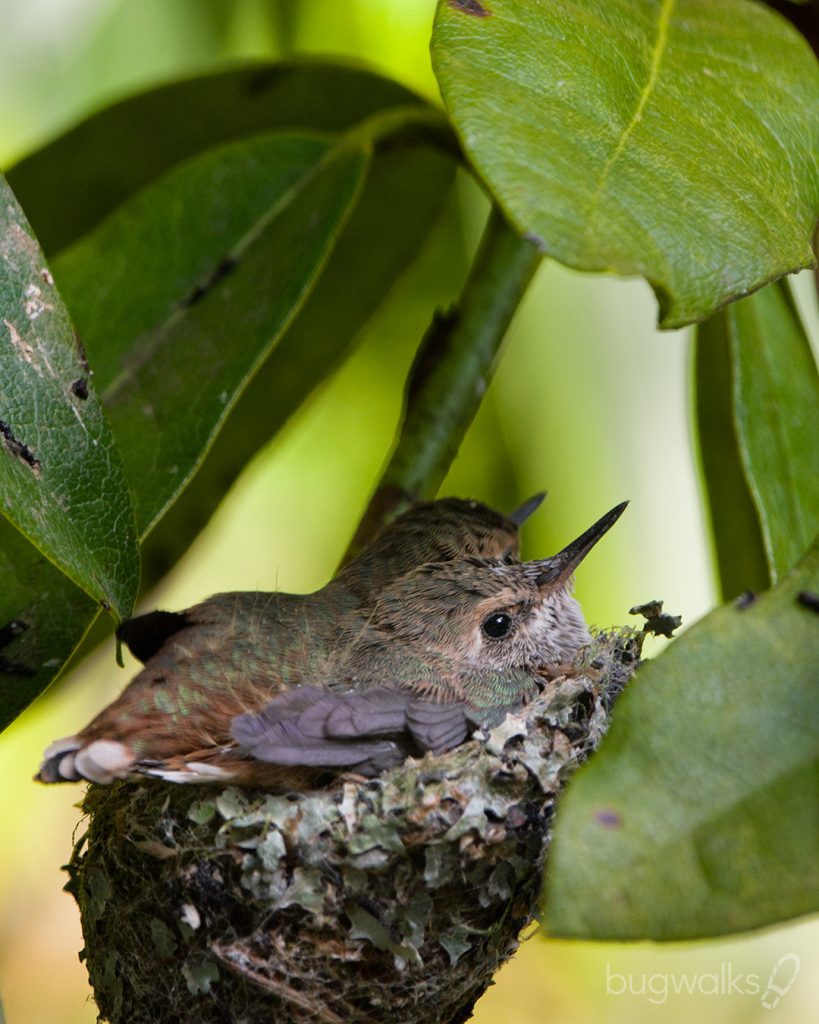
Uno and Dos
We noticed that one chick had a sleeker look to it and the other was a bit scruffier. We figured that the sleek one was the older of the two so we called it Uno. The presumably younger one we called Dos. Since rufous hummingbirds traditionally winter in Mexico we figured these names might help them fit in better.
Growing Up and Testings Wings
Soon the the little spikes on the chick’s bodies started to form into feathers. Their beaks became longer and lost the yellow color of newborns. Uno was the first to start exercising its wings. A few days later I spotted Dos also giving its wings a little buzz.
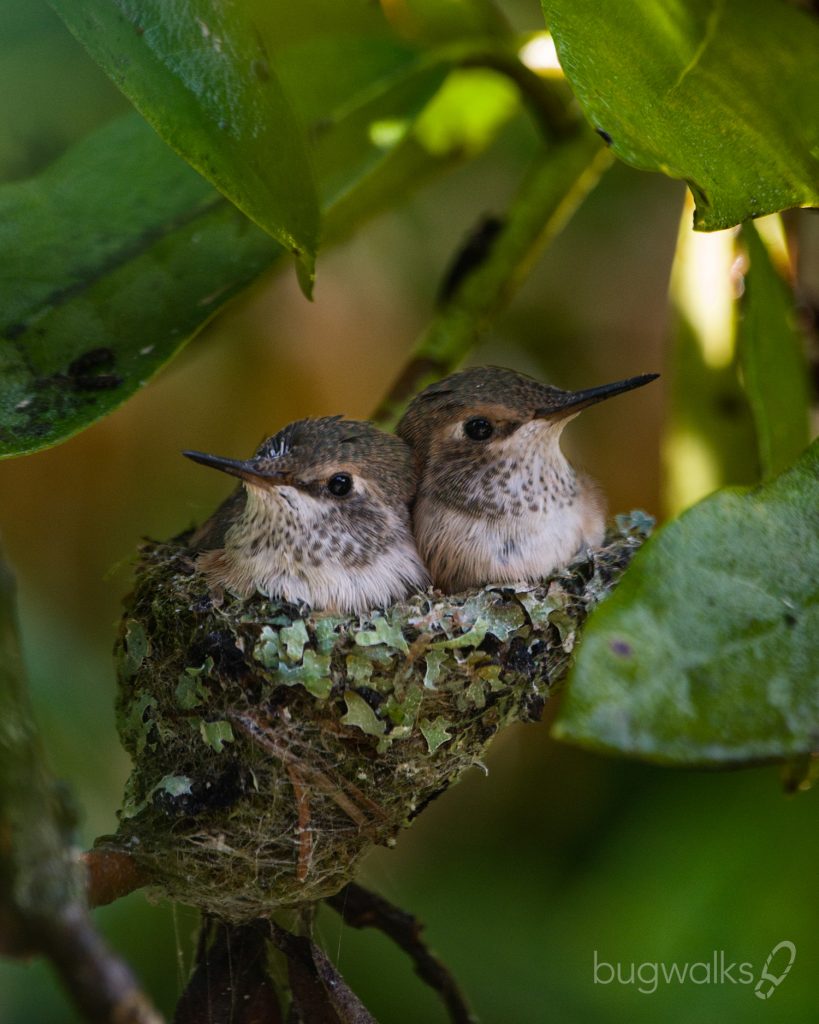
Learning to Fly and Leaving the Nest…
It was only a matter of time before the two chicks took their first flights. I was able to capture a little video of Uno taking off and landing on the edge of the nest.
You can view the video here: Uno Takes Flight
Twenty-two days after they hatched Rhodie’s little babies left the nest. The image of Uno and Dos snuggled in the nest was taken that morning. They almost appeared to be posing for the photo but I am sure that was just my imagination. I was a bit sad to see the empty nest but very happy to see the young fledglings flitting about the rhododendron bush.
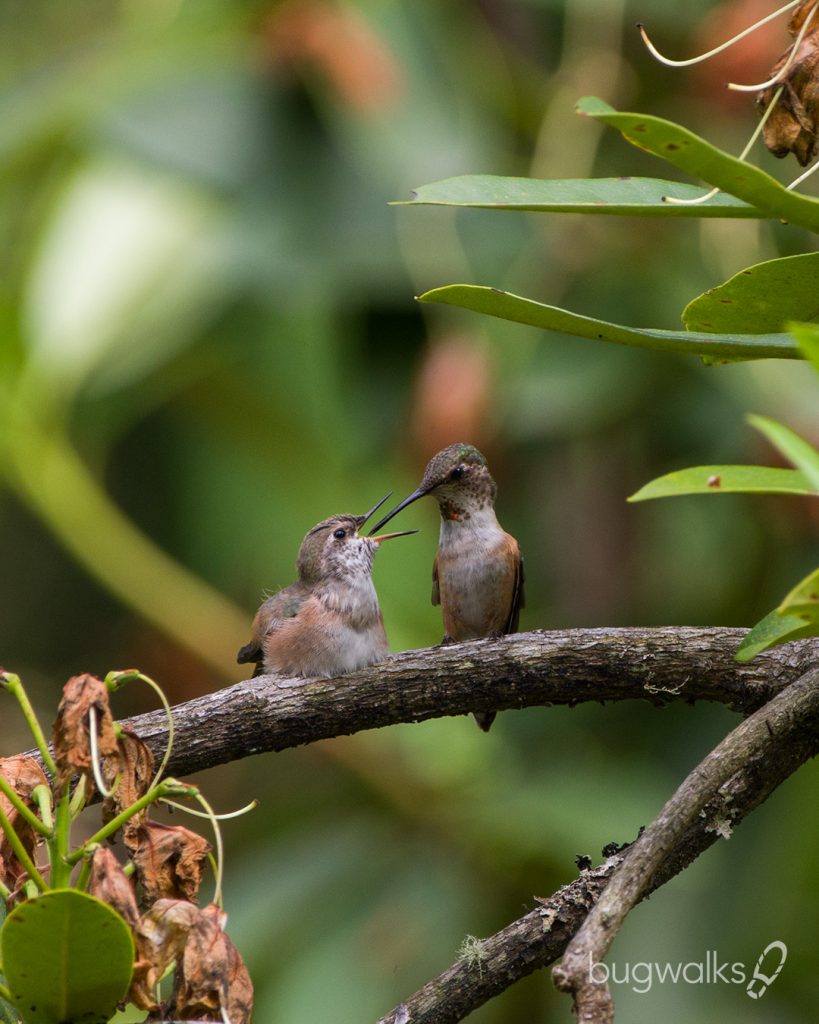
The Big, new World…
Rhodie continued to feed her chicks once they left the nest. We mostly saw her feeding Dos on a favorite branch not far from the nest. Uno would show up occasionally and then zoom off. We started to see hints of coloring in their feathers that indicated Uno was a male and Dos a female.
Once the chicks left the nest we hung up some hummingbird feeders. There were other hummingbirds around and the feeders became a place of many altercations as the summer progressed. Rufous hummingbirds are well known to be very protective of their food sources.
I did spot (who I thought to be) Uno at the feeder but more often than not would be chased off by another hummingbird. It is about at this point where we were unable to tell the chicks from other fledgling hummingbirds in the area. Rhodie was pretty easy to spot and she hung around for quite a while.
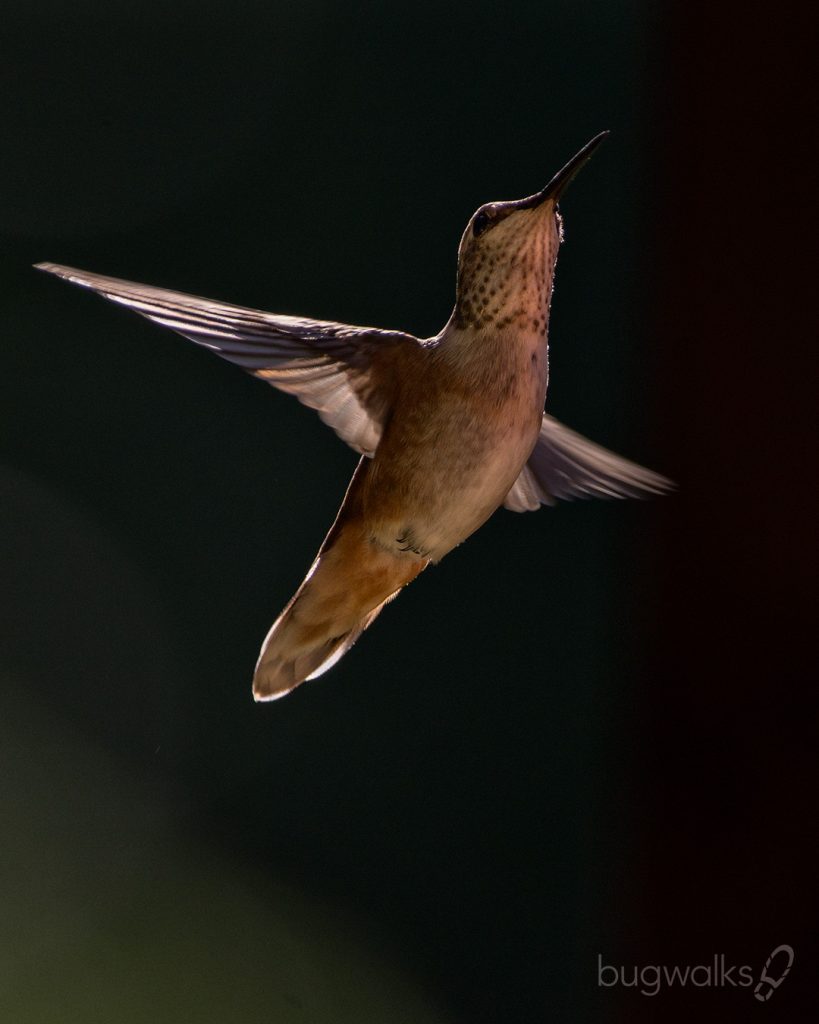
Graceful Masters of the Skies!
This image could be Uno but I am not sure. Watching these creatures grow from their first day to the day they were zooming around our yard has been one of my most rewarding experiences. I am also glad to have made the effort to photograph it as much as possible. We looked forward to getting home each day and checking on the little Rufous family. I did share many of these images on social media and received some encouraging feedback. However, I did want to more completely document the experience and have it all in one place hence this blog entry on the Bugwalks website.
I hope you enjoyed this little journey and feel free to post any comments or questions.
Thanks for reading!
Rhodie’s Gallery
This gallery contains all of the images above as well as some additional shots. Enjoy!!

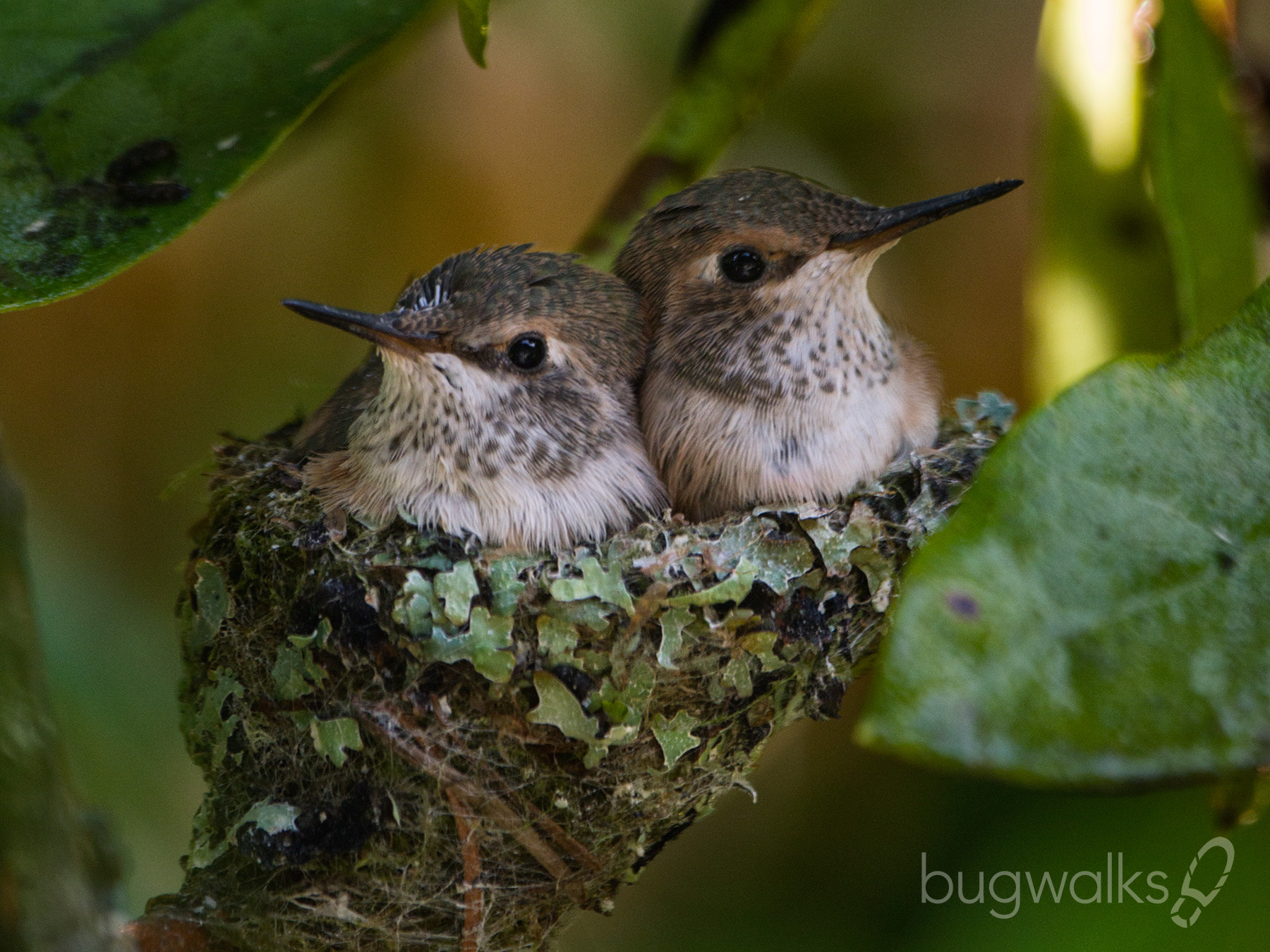

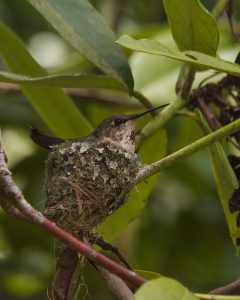
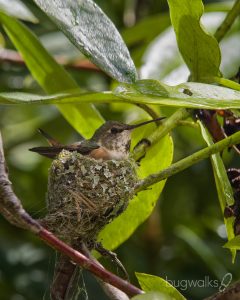
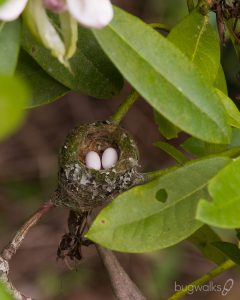
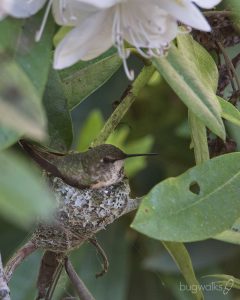

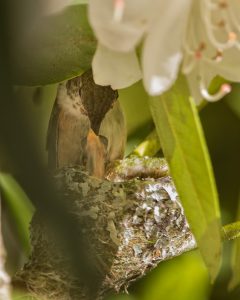
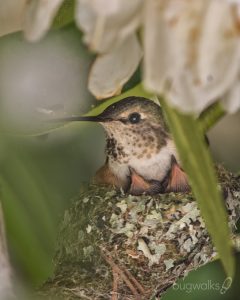
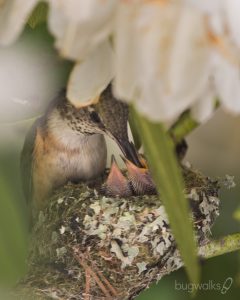
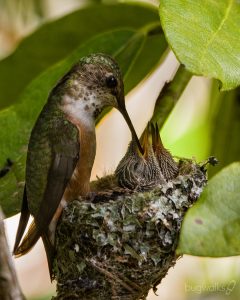


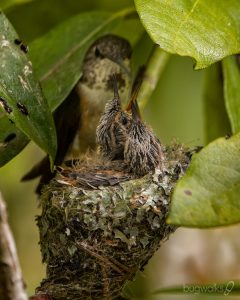
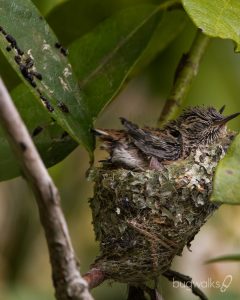

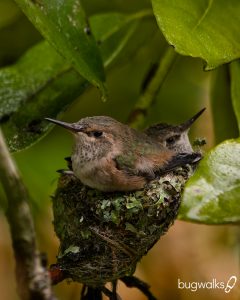
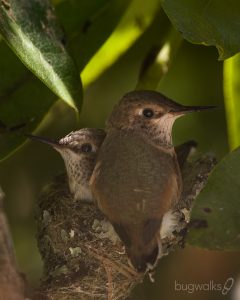
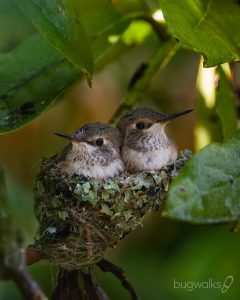

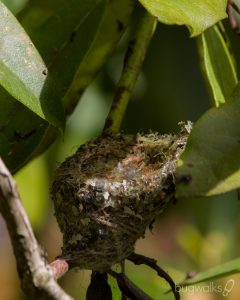

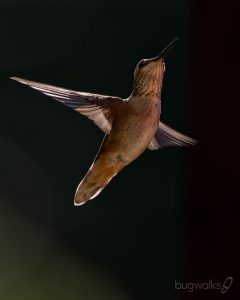
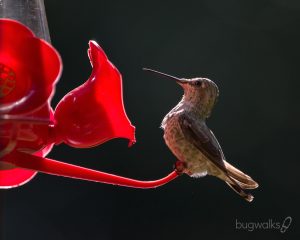
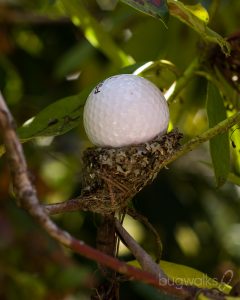
These are awesome photographs and videos. I have many hummers around my house and some Anna’s who hang around all year long. It was quite an experience to see Rhodie’s little ones grow up. Thank you for giving me and so many others the pleasure of witnessing this!
Thanks Michelle! I am glad you enjoyed the article. It was truly a joy to witness and photograph Rhodie’s journey. I hope she comes back next season!
How amazing! Thank you for these incredible photos documenting the mama and hatched babies. One question…are the baby rufous smaller than the mom when they start to fly?
The fledglings may be slightly smaller but it is difficult to tell. Rufous are small already!